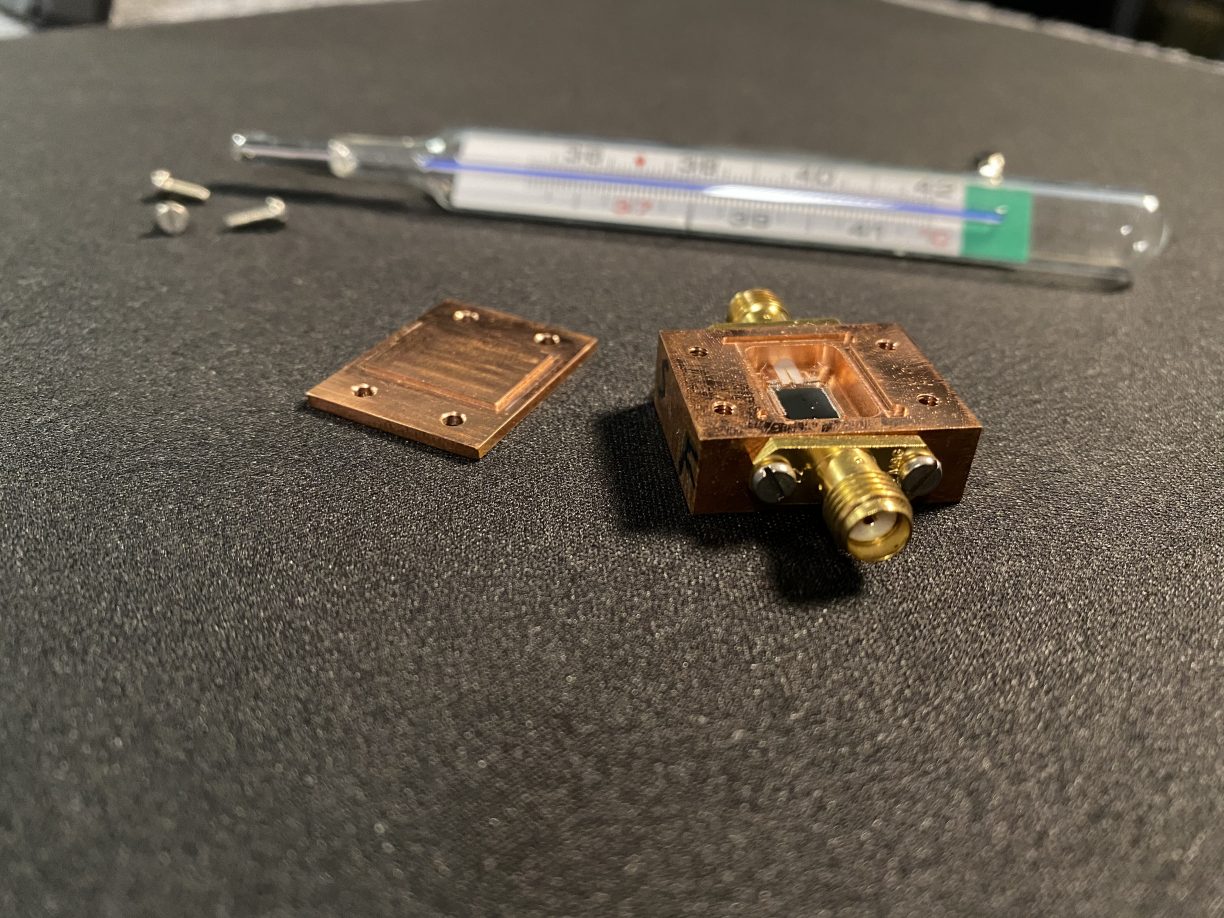Our paper on Radiation Field Thermometry is published in Physical Review X
Publication Research highlight March 23, 2021

Together with collaborators at Chalmers and ETH Zurich, we demonstrated a primary thermometer for propagating microwaves, with potential for applications in quantum information processing and quantum thermodynamics. Our results are published in Physical Review X.
You can read a news article about it here.
And here you can find the official press release associated with this publication.
More information on the thermometer
Measuring the temperature of propagating modes in microwave coaxial cables and waveguides is of paramount importance for reducing the introduction of errors in the quantum bits and the heat baths in experiments in quantum thermodynamics.
This thermometer relies on the interplay between coherent and incoherent scattering from a quantum emitter driven at resonance. The emitter is strongly coupled to the end of the waveguide under test. Thermal photons in the waveguide lead to a drop in the coherently scattered signal, which is continuously recorded. Our implementation, which uses a superconducting circuit operated at gigahertz frequencies, features simplicity, large bandwidth, high sensitivity, and negligible power dissipation.
We expect this thermometer to enable a range of experiments in thermodynamics at the nanoscale and in the quantum regime. For example, it can monitor in real time the temperature of a mesoscopic electron reservoir or measure the scattering of thermal microwaves from a circuit acting as a quantum heat engine or refrigerator. It also provides a way to benchmark the cryogenic environment in quantum computing and quantum sensing experiments.
